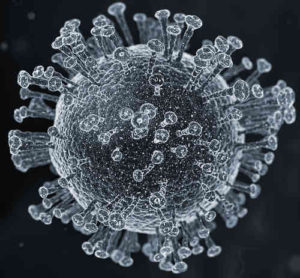Seven months into this pandemic, I know many health journalists may be struggling to stay on top of the unending breaking news about the pandemic. Developing national and local enterprise stories about COVID-19 can seem overwhelming.
If you haven’t already, I recommend signing up for Al Tompkins’ COVID-19 morning email. It is free and chock-full of story ideas and context that you can use for local, state, and national coverage that goes beyond a breaking news story.
Tompkins is a senior faculty member at the Poynter Institute, one of the nation’s best journalism education and ethics organizations. He has decades of broadcast and investigative journalism experience. Since March, Tompkins has channeled his considerable energy into combing the Internet for under-covered COVID-19 stories, in addition to helping reporters provide more context to the public.

“Everything is constantly breaking news,” Tompkins said in a new AHCJ How I Did It piece. “It’s Friday and the whole world unravels every Friday. Journalists are just exhausted. That makes me want to do (this) column. Anything … to help journalists do their job.”
Tomkins draws his ideas from scanning stories on Google News and pouring through studies published by the government and academia, newsletters published by professional associations, including newsletters from groups that represent surgeons, nurses, corrections officers and firefighters. He also gets tips from readers, which he follows up to see if they are real.
“Journalists are inundated with rumors and false information,” he said. “And I don’t want my colleagues spending unnecessary amounts of time chasing things that are clearly untrue or (spend time) chasing something to say that it isn’t true.
When Tompkins considers which stories he wants to highlight in his daily email, he thinks about stories that have an impact in eight categories, including how it affects their wallet, family, health, safety, community, curiosity, and sense of injustice. He also picks stories that are trending.
“Money, family, health, safety and community,” he said. “Those are the big five. If it has to do (with one of those), it’s a surefire hit. The three other kinds that have potential … are moral outrage, or injustice, … curiosity … and … trending.”
Reminding people of the pandemic’s direct impact on individuals, as much as journalists can, is also the best way to help dispel misinformation about SARS-CoV-2, the virus that causes COVID-19, he said.
“Part of what reporting assumes is that if we give you good information, that you’ll make good choices,” Tompkins said. “That just doesn’t seem to be the way it happens. (People make decisions) … based on ‘what does this mean to me?’ Not, ‘Is this good for society?’ Or if it is real. We constantly misjudge that people armed with good information will make good choices. … So we have to keep reminding people how this affects their life.”
After reading the HIDI, check out Tompkins’ daily email and Poynter’s other COVID-19 resources.









